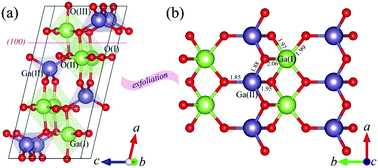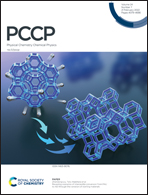A novel 2D material with intrinsically low thermal conductivity of Ga2O3(100): first-principles investigations
Abstract
The discovery of new semiconducting materials with low thermal conductivity is of vital importance in promoting thermal energy conversion and management. Herein, lattice dynamical and thermal transport mechanism of new energetically stable 2D Ga2O3(100) is presented using density functional theory. The results show that 2D Ga2O3(100) possesses an extremely low lattice thermal conductivity of ∼0.71 W mK−1 at 300 K. We find that 2D Ga2O3(100) possesses two intrinsic features that decrease the lattice thermal conductivity: (1) the existence of interspersed distorted tetrahedral and pentahedral coordination geometries, which improves the phonon anharmonicity of the system; (2) compared to bulk β-Ga2O3, the reduced dimensionality suppresses heat transfer by introducing interfacial scattering in 2D Ga2O3(100). Additionally, the strong Ga–O covalent bond results in a low speed of sound, high phonon–phonon scattering rates, and thus low lattice thermal conductivity. Our finding is remarkable because ultralow thermal conductivity can be realized in a simple 2D oxide, which provides replaceable materials for further applications in the field of thermal management.



 Please wait while we load your content...
Please wait while we load your content...